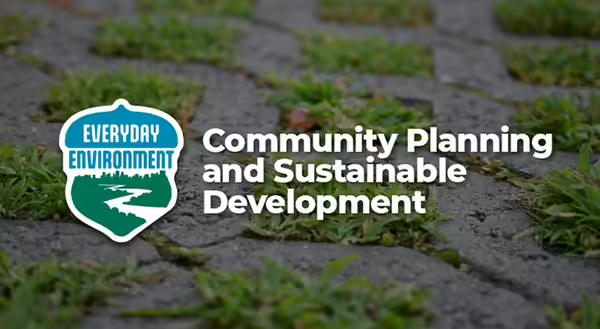
Community systems to manage water were built a long time ago and since then, historical hydrological patterns, or how water moves through the landscape, have changed. Changes in rainfall distribution is increasing the risk of flooding in some regions and leading to water scarcity in others. These shifts really necessitate adaptive infrastructure that manages excess water during storms and then sustains supply during dry periods, too. These current hydrological patterns no longer align with some of the realities of our current infrastructure. Additionally, urban growth and more impervious surfaces – such as parking lots, roads, and rooftops – has also disrupted the natural hydrological cycles. These changes have resulted in increased surface runoff, reduced groundwater recharge, and higher flooding risks. Economic pressures also create a lot of barriers to progress. Modernizing water infrastructure requires substantial financial investment, and communities already have strained budgets. This leads to deferred maintenance that increases community vulnerability to catastrophic events and failures over time.
Involve communities in water decisions
The key to addressing water challenges is collaboration. Effective water management should be community centered and involve a lot of different perspectives and people. Everyone uses water in some way, shape, or form, so public involvement and awareness is essential to fostering a deeper understanding of water systems and implementing sustainable solutions.
One strategy that balances ongoing development with the preservation of our natural resources is called comprehensive watershed planning. This planning approach allows communities to look at development through an ecosystem service lens and accounts for the interconnected impacts of land use on water resources across watersheds, communities, and municipalities. A key aspect of this type of planning is fostering collaboration between municipalities and interested parties. This connection allows for a shared vision and strategies that align development goals with localized water resource protection.
The One Water approach also emphasizes collaboration and partnership among water users to prepare for and balance multiple water needs within a community and a watershed. Working across multiple agencies on a municipal scale ensures a shared vision, mission, and goals for all the different water needs in that community.
Both of these approaches allow communities to recognized that their actions will impact those downstream and that working together is benefits everyone involved. Adopting these proactive measures is essential to safeguard all our water resources.
Another essential aspect of community planning is creating a robust emergency response plan. This is essential for communities to build resilience to extreme weather events. The plans need to outline rapid deployment of resources, coordination, collaboration across agencies, and integration of community-based responses to minimize disruptions when there is a crisis.
How to manage water on a community scale
Implementing water management practices can and should look different for every community. Every municipality and watershed have individual needs and challenges that they must identify and find solutions for.
Communities are implementing policies that require developers to limit impervious surface coverage and conduct hydrological impact assessments for projects near water ways. Another practice become more common is using land use planning tolls such as overlay districts and zoning regulations that provide additional protection for water resources. This ensures that development will complement rather than disrupt natural systems.
Green infrastructure incentive programs are another option that encourages water-focused designs so municipalities can align economic motivations with ecological preservation through density bonuses, tax credits, expedited permitting or reduced fees for projects that are exceeding stormwater management standards.
Because of the aging infrastructure, communities want to find solutions beyond just fixing or replacing. They want to build resilient systems that can handle these heavy precipitation events to reduce the stress on the infrastructure itself. This occurs by involving community voices and making multiagency efforts to implement solutions for the future.
Resources
Illinois Groundwork is a tool that provides communities and stormwater professionals with resources on green stormwater infrastructure design and implementation.
This article was written based on a podcast with Kara Salazar, Assistant Program Leader for Community Development and Sustainable Communities Extension Specialist with Purdue Extension and Illinois-Indiana Sea Grant
Thank you for reading!
Everyday Environment is a series of blogs, podcasts, webinars and videos on exploring the intricate web of connections that tie us to the natural world. Want to listen to us chat about this topic? Check out the podcast episode on this topic to hear more from the Everyday Environment team.
Listen to the Podcast Sign Up for Everyday Environment Newsletter